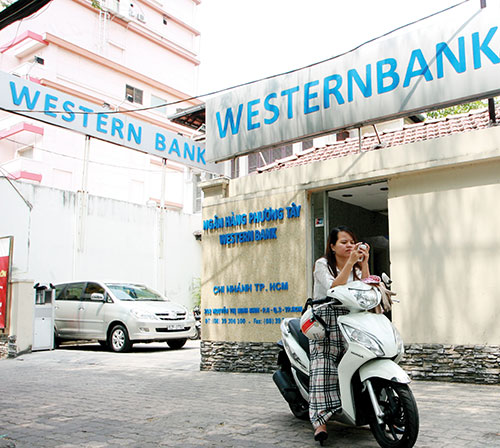Pvcombank to make its debut

PetroVietnam Finance (PVFC) last week announced it would hold a joint shareholder meeting on September 8 to form the new entity, which would be named Vietnam Public Bank or Pvcombank.
The merger, the first in Vietnam between a finance company and a bank, was guided by the State Bank’s efforts to restructure a banking sector heavily burdened by bad debt.
Pvcombank would have an initial charter capital of VND9 trillion ($428.6 million), equivalent to 900 million shares valued at VND10,000 ($0.47) each. Its total asset value would be nearly VND100 trillion ($4.76 billion).
The merged bank is expected to have 102 trading points, including one head office, 30 branches, 67 transaction offices and four savings funds. The head office of the newly-formed bank will be situated at PetroVietnam’s current headquarters in Hanoi.
Plans envision Pvcombank to expand its equity to VND12 trillion ($571.4 million) and achieve profits of VND1.24 trillion ($59.05 million) by 2015.
The new bank plans to prioritise loans in oil and gas, mineral exploitation and electricity, with a focus on exploiting, processing and trading petrochemical products. It expects to raise the proportion of lending to such sectors from 42.3 per cent as of the end of 2012 to 48 per cent in 2015.
Plans further call for Pvcombank to gradually increase the proportion of credit for individuals, with the bank targeting a rate of 20 per cent for consumer loans by 2015.
Pvcombank would maintain a minimal 1 per cent of its total loans for the agricultural sector due to low profitablity. It aims to cut lending to construction and real estate investments due to the weak outlook for market recovery and potential risks in the sector.
The bank plans to gradually reduce credit to commerce, services, and other sectors while intending to increase lending for production.
Pvcombank projected net profits of VND420 billion ($20 million) for 2013, VND756 billion ($36 million) for 2014 and VND1.235 trillion ($58.8 million) for 2015. Bad debts [loans of groups 3-5] are forecast to stand at 4.2 per cent by the end of 2013, down to 3.61 per cent in 2014 and to 3.34 per cent in 2015.
It also aims to achieve an average annual credit growth of 9 per cent within three years of the merger.
Pvcombank also plans to sell bad debts to the new Vietnam Asset Management Corporation (VAMC), the new state-backed entity to resolve the sector’s debt burden, or other credit institutions as one of ways to reduce its bad debt ratio in the period of 2014-2015.
The merger is part of the central bank’s scheme to restructure lenders saddled with a high volume of non-performing loans (NPLs).
Western Bank is classified as a weak bank with observers unsure about its true level of NPLs. Its equity is reported at VND2.3 trillion ($110 million), lower than the minimum equity of VND3 trillion ($144 million) regulated by the State Bank.
Meanwhile, PVFC also has had some financial problems. The company had posted 2012 second-quarter profits at its lowest level since 2010, with securities investments making losses for six straight quarters. US-based Morgan Stanley is now PVFC’s foreign strategic shareholder, holding a 10 per cent stake.
What the stars mean:
★ Poor ★ ★ Promising ★★★ Good ★★★★ Very good ★★★★★ Exceptional
Latest News
More News
- Tax sector wraps up 2025 and sets priorities for next year (December 25, 2025 | 14:00)
- A tipping point for digital and hybrid wealth management in Vietnam (December 23, 2025 | 13:33)
- $250 million deal targets women-owned SMEs, sustainable agriculture (December 22, 2025 | 17:40)
- Stock market posts resilient 2025 performance (December 19, 2025 | 18:17)
- Citi Vietnam receives 2025 AmCham CSR recognition (December 19, 2025 | 16:35)
- As global green supply chain reshapes, will Vietnam be left behind? (December 19, 2025 | 08:00)
- Banks gear up for massive capital increases (December 18, 2025 | 17:04)
- Securing capital and efficiency for Vietnam’s 2026-2030 growth ambitions (December 17, 2025 | 10:00)
- Energy sector in need of blended finance mechanisms (December 17, 2025 | 09:00)
- Vietnam still has room to mobilise capital for sustainable growth (December 17, 2025 | 08:57)

















 Mobile Version
Mobile Version